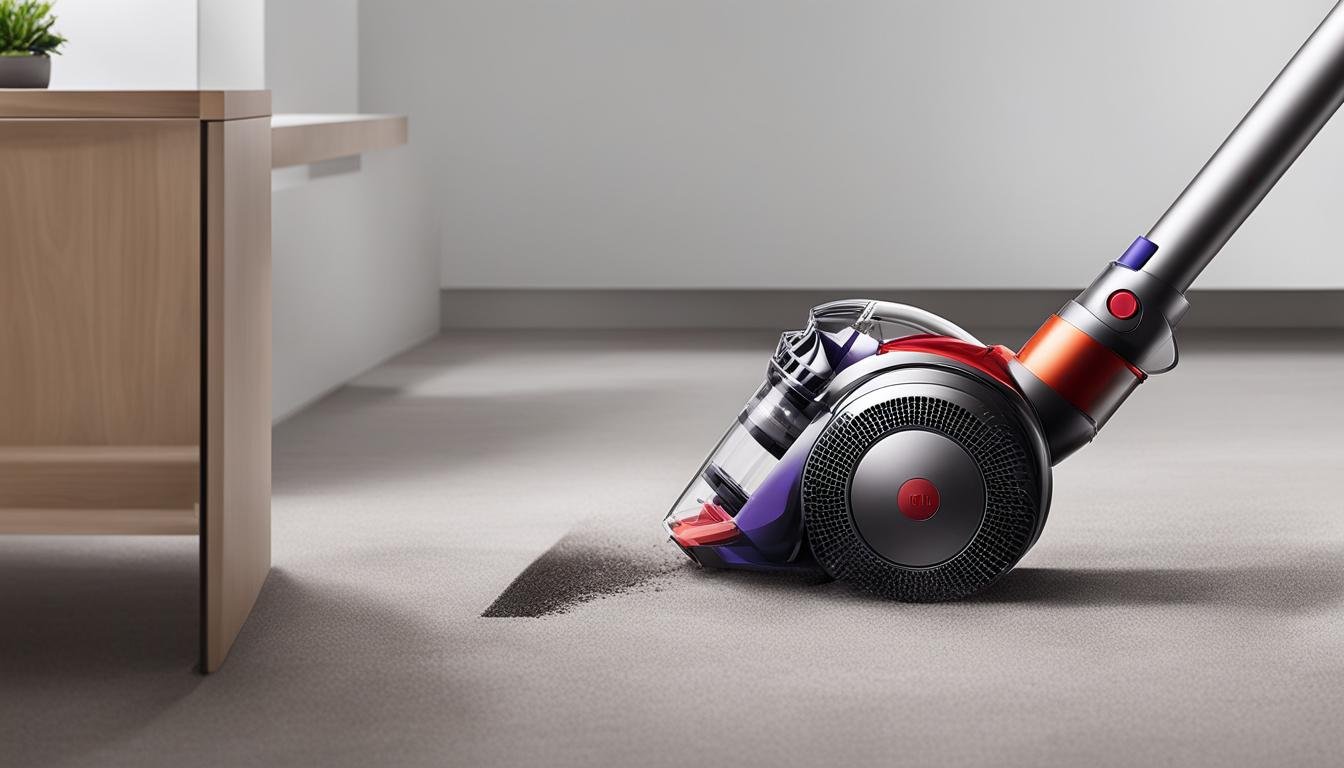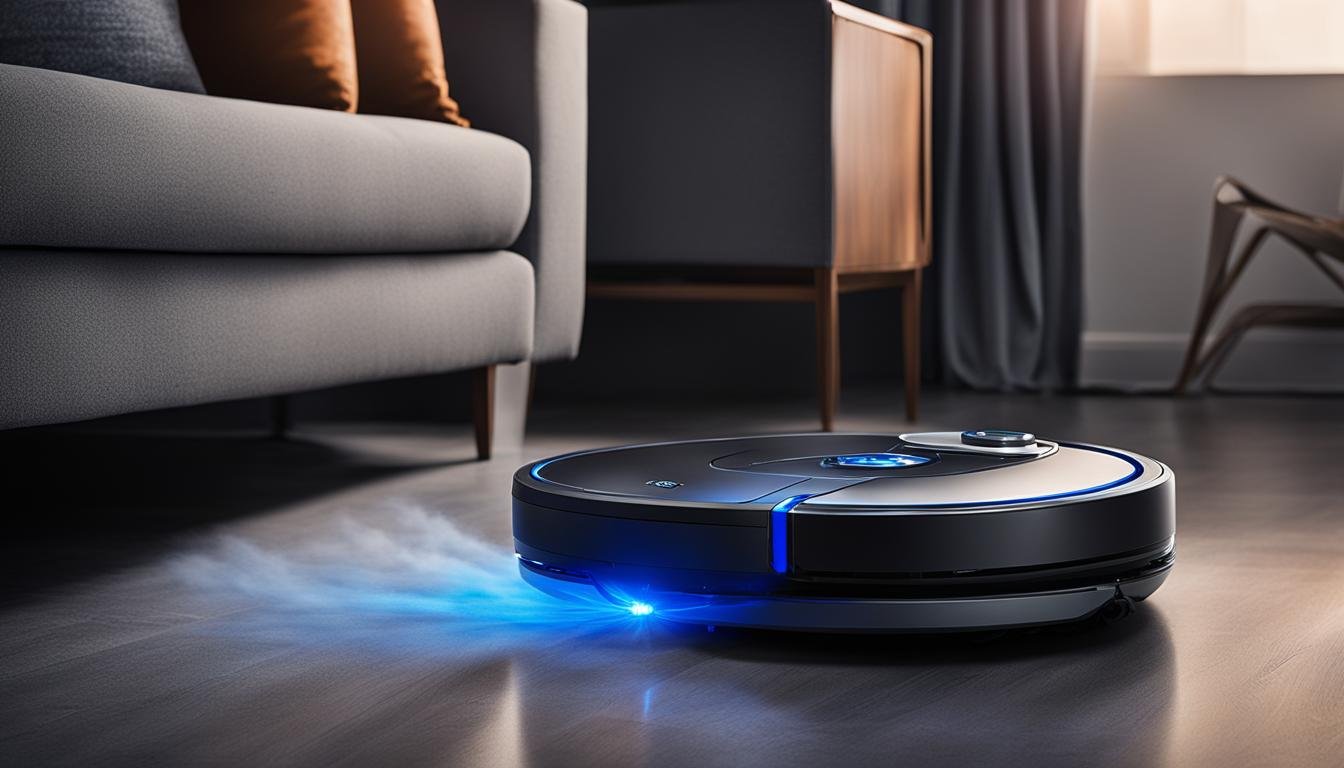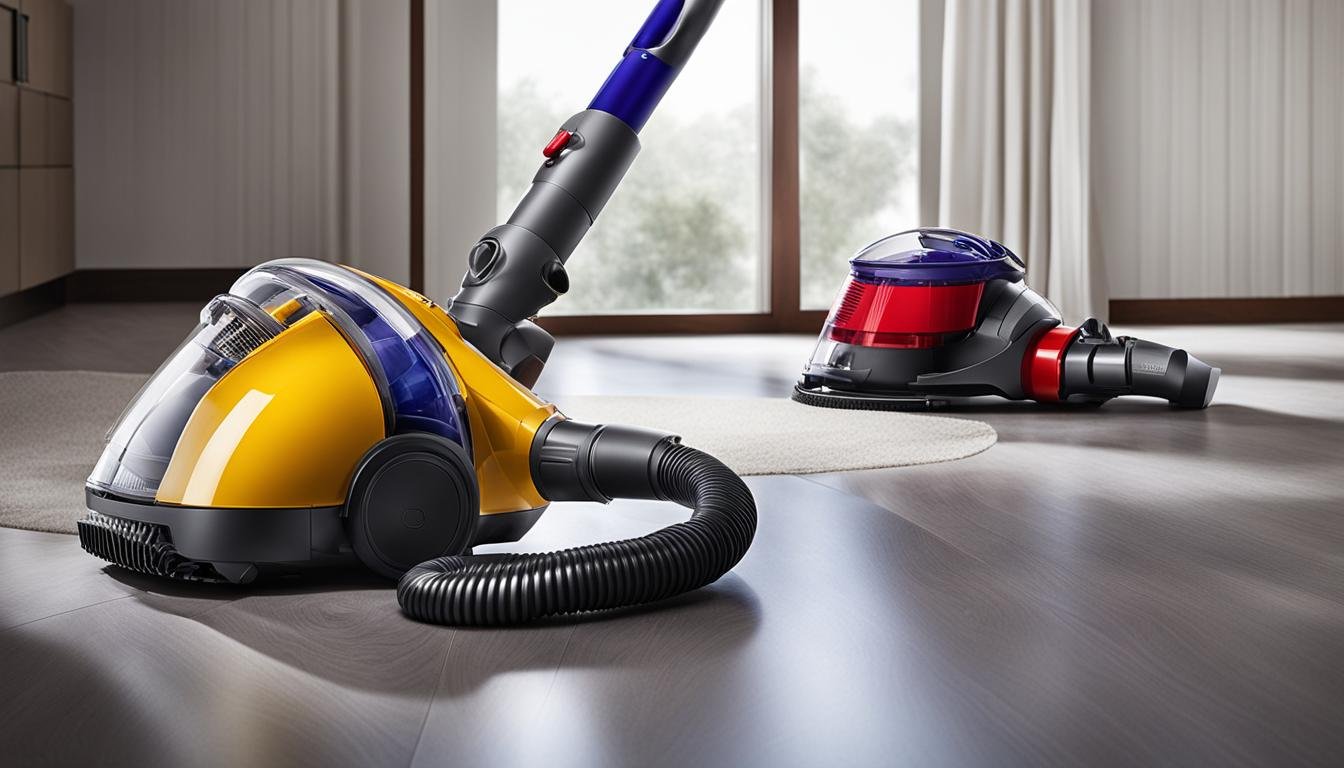A vacuum cleaner is an essential household appliance, but there may come a time when you need to destroy one. Whether it’s because you have a broken vacuum or you simply want to dispose of an old appliance, there are several methods you can use to destroy a vacuum cleaner safely and effectively.
In this article, I’ll show you how to destroy a vacuum cleaner. We shall explore different ways to dismantle and damage a vacuum cleaner, ensuring it is beyond repair. This information is sourced from various reliable sources and will provide you with the necessary steps to successfully destroy a vacuum cleaner.
Key Takeaways:
- Destroying a vacuum cleaner is sometimes necessary, whether due to a broken appliance or the need for disposal.
- There are safe and effective methods to dismantle and damage a vacuum cleaner, ensuring it is beyond repair.
- Expert advice and reliable sources will guide you through the steps of destroying a vacuum cleaner.
- It’s important to follow manufacturer guidelines and take proper safety precautions when handling a vacuum cleaner.
- Consider consulting with a professional or exploring recycling options if you’re unsure about destroying your vacuum cleaner.
Common Spills That Could Damage or Block Your Vacuum
One of the easiest ways to damage or block your vacuum cleaner is by vacuuming up certain household spills. According to experts, there are six common spills that could harm your vacuum:
- Soil and plant debris
- Sharp objects like broken glass
- Ash and sawdust
- Liquids
- Small objects
- Sticky substances
Soil and plant debris can stain your carpet and clog your machine, while sharp objects like broken glass can tear the bag and damage the internal components. Ash and sawdust contain fine dust particles that can clog the filters and reduce suction. Vacuuming up liquids can cause electrical failures and create a dirty, damp mess. Small objects can get stuck in the brush or puncture the tubing or motor. Sticky substances can clog the filter and damage the motor. It’s important to avoid vacuuming up these spills to prevent damage to your vacuum cleaner.
“Vacuuming up certain spills can be detrimental to your vacuum cleaner’s functionality and longevity. It’s crucial to understand the potential risks associated with these common spills and take measures to avoid them.”
By being mindful of the spills you vacuum and taking the necessary precautions, you can ensure that your vacuum cleaner remains in good working condition for years to come.
| Spill Type | Potential Damage |
|---|---|
| Soil and plant debris | Stains, clogs |
| Sharp objects like broken glass | Torn bag, internal component damage |
| Ash and sawdust | Clogged filters, reduced suction |
| Liquids | Electrical failures and mess |
| Small objects | Brush blockage, punctured tubing or motor |
| Sticky substances | Clogged filter, motor damage |
The Top 5 Things That Will Destroy Your Vacuum
In addition to common spills, there are other damaging tips for vacuum cleaners that you should avoid. These actions can lead to the destruction of your household appliances. Here are the top five things you should steer clear of in order to protect your vacuum cleaner:
- Vacuuming up broken glass: Broken glass can cause tears in the vacuum bag and damage the internal components of your vacuum.
- Using diatomaceous earth: While diatomaceous earth is commonly used as a cleaner, its fine particles can clog the filters and cause damage to your vacuum.
- Vacuuming poisons or harmful substances: Not only can vacuuming poisons be hazardous to your health, but they can also damage the motor of your vacuum cleaner.
- Sucking up used coffee grounds: Used coffee grounds can clog the filter of your vacuum, creating a breeding ground for bacteria.
- Vacuuming fireplace ashes: Fireplace ashes can harbor heat and melt plastic components in your vacuum, leading to irreversible damage.
By avoiding these destructive actions, you can prevent unnecessary harm to your vacuum cleaner and extend its lifespan.
To illustrate the importance of this topic, take a look at the real-life story of Lisa, a homeowner who unknowingly wrecked her vacuum cleaner by vacuuming up broken glass. Here’s what she had to say:
“I never thought that vacuuming up broken glass could cause so much damage to my vacuum cleaner. The glass tore through the bag and ended up damaging the motor. I had to replace the entire vacuum, which was an expensive mistake. I wish I had known about these damaging tips earlier.”
Remember, being aware of the actions that can destroy your vacuum cleaner is the first step towards protecting your household appliances and saving yourself from unnecessary expenses.
Additional Facts about Damaging Tips for Vacuum Cleaners
| Fact | Impact |
|---|---|
| Broken glass | Tears through vacuum bag and damages internal components |
| Diatomaceous earth | Clogs filters and cause damage |
| Vacuuming poisons or harmful substances | Hazardous to health and damages the motor |
| Used coffee grounds | Clogs filter and create a breeding ground for bacteria |
| Fireplace ashes | Harbors heat and melts plastic components |
Conclusion
Destroying a vacuum cleaner may not be a common task, but there are valid reasons why someone might need to do so. Whether you want to dispose of an old appliance or make sure a broken vacuum is irreparable, it’s important to follow the right methods. By avoiding common spills and harmful actions, you can protect your vacuum cleaner and extend its lifespan.
Remember to always read the manual and follow the manufacturer’s guidelines for proper maintenance and care of your vacuum cleaner. This will help prevent unnecessary damage and ensure optimal performance. If you’re unsure about destroying your vacuum cleaner or need assistance, consider consulting with a professional or exploring recycling options.
Take the necessary precautions and handle your vacuum cleaner with care. By doing so, you can avoid the need for replacement and contribute to a more sustainable environment.






Leave a Reply